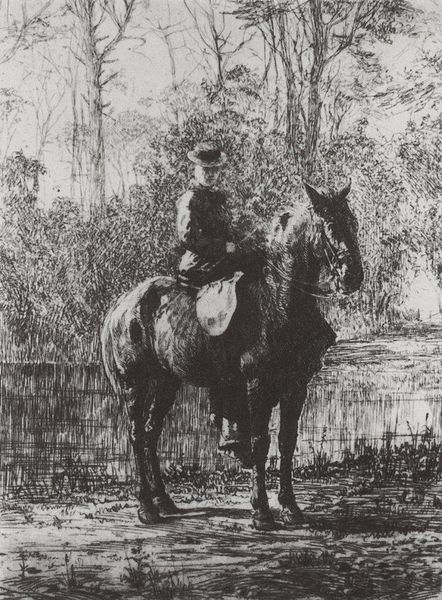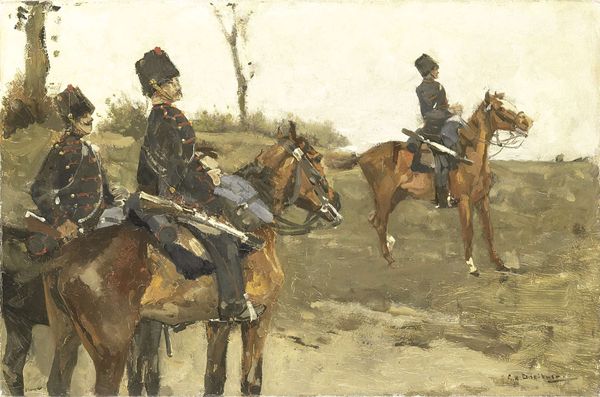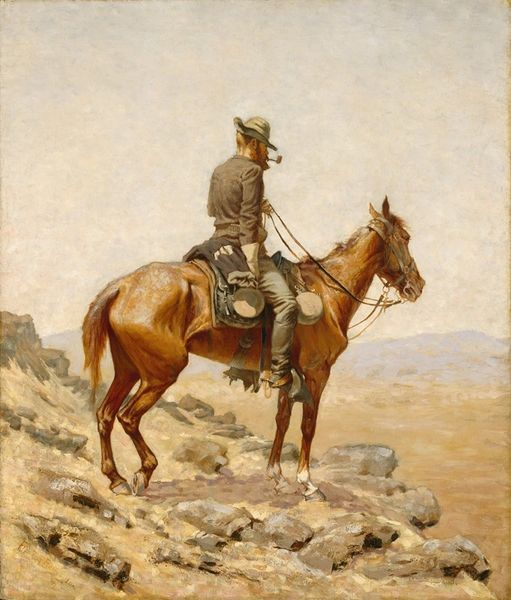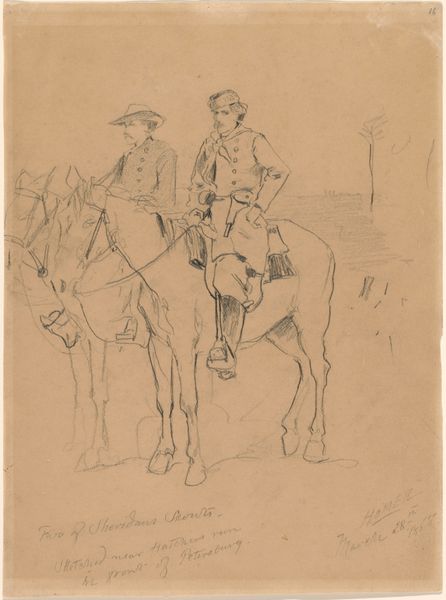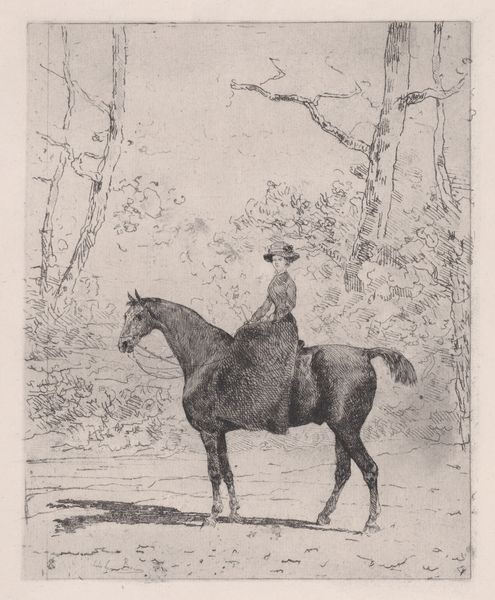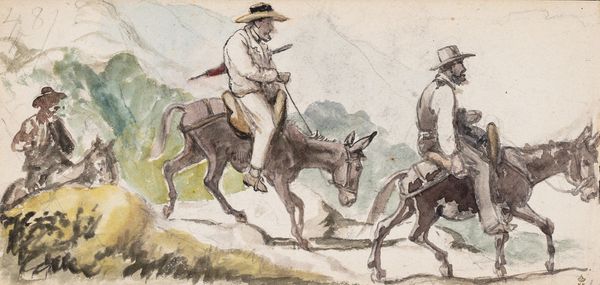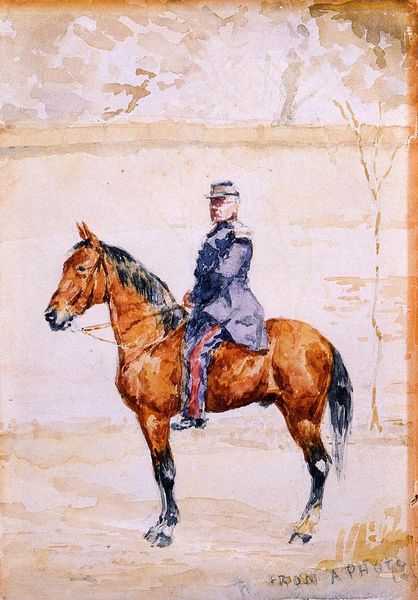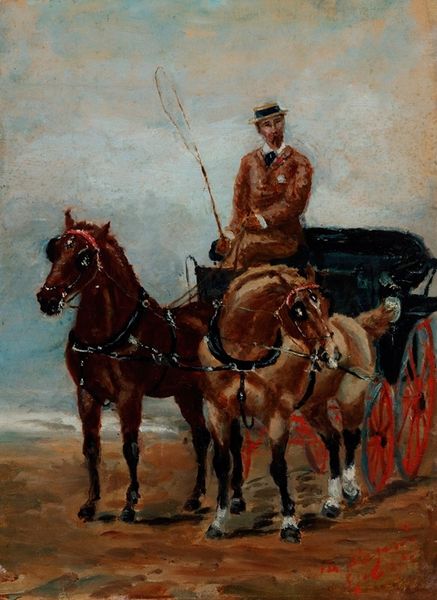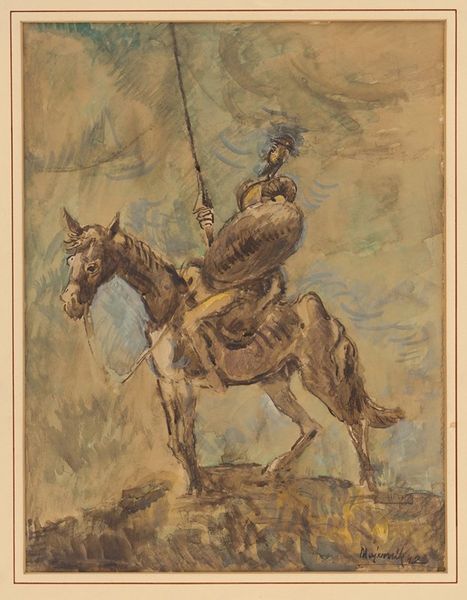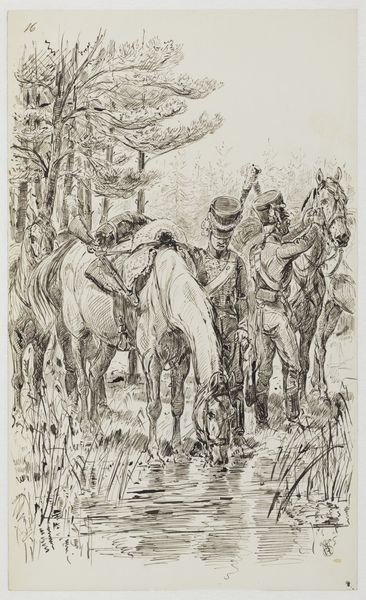
drawing, plein-air, watercolor
#
portrait
#
gouache
#
drawing
#
figurative
#
impressionism
#
plein-air
#
landscape
#
watercolor
#
watercolour illustration
#
genre-painting
#
history-painting
#
watercolor
#
realism
Copyright: Public Domain: Artvee
Winslow Homer made this work, "Two Scouts", with watercolor on paper. These were commercially available materials, easy to transport, and fast to use. Watercolor was increasingly popular in the 19th century because the rise of industrial manufacturing made it more accessible and affordable. Homer used this medium to capture a scene from the American Civil War. The fluidity of watercolor allowed him to depict the soft, humid atmosphere of the Southern landscape, which is emphasized by the work's limited tonal range. But look closely, and you can also see the rapid strokes and layering of washes that build up the figures of the scouts and their horses. This shows Homer's labor in building up the image in front of us. Though it may appear to be a quick sketch, the transparency of the medium required careful planning and execution to achieve the final effect. It brings into focus how watercolors could capture fleeting moments during the war, yet required dedication and skill. That making process invites us to consider the relationship between artistic production and the realities of conflict.
Comments
No comments
Be the first to comment and join the conversation on the ultimate creative platform.


